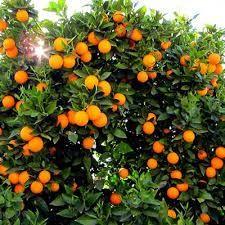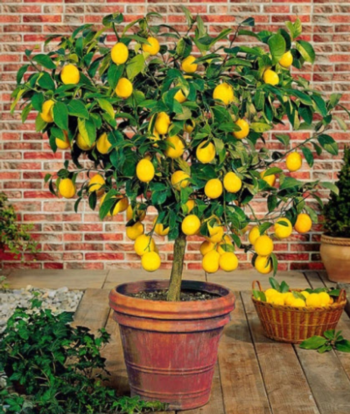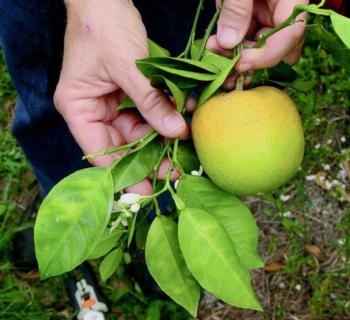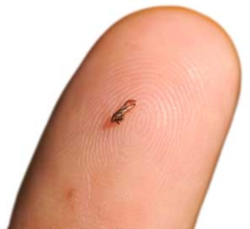All about citrus
-
What says sunshine more than a bowl of citrus on a kitchen counter? California is fortunate to have ideal climate for growing citrus. These iconic evergreen shrubs and trees are notable for fragrance found in blossom, leaf, and fruit. Each of us has experienced the sudden fragrant and intoxicating haze created as we peel an orange. This volatile, flammable oil is generally toxic to bacteria and insects and is a plant defense mechanism. Fortunately, over time, we have developed positive responses to citrus as do bees hungry for citrus nectar. Evergreen, prolific and low maintenance, a citrus type can be matched to everyone's garden.

A bountiful harvest of citrus allows you to juice, make jams and jellies, as well as candied rind. Peels can also be used to make flavorings, dried powder zests and libations including limoncello, an Italian lemon liqueur and vin d'orange, a sultry fortified wine made from Seville oranges, also known as marmalade oranges. More possibilities include citrus butter, citrus salsa, citrus curd and citrus cakes. And, of course, there’s always the fresh fruit plucked right off the branch – always a delicious, sweet, aromatic treat.A slice of history
The juicy lemons and oranges we relish in winter share an exotic past. In addition to being fragrant and delicious, citrus fruits have saved lives, enticed nobility, kept religious traditions alive and maybe even started the Mafia.Fossilized leaves suggest citrus existed 7 million years ago, and it’s seen significant cultivation for 2,500 years. Every variety available today comes from four pedigreed ancestors: citron, pomelo, papeda and mandarin. These fruits swapped genes for thousands of years, creating tastier varieties as they evolved. Eventually humans got involved and what we see stacked at the grocery store is the end result: zesty lemons, limes, oranges and grapefruits bursting with vitamin C, folate and potassium. Citrus is an excellent choice for large pots on sunny decks and patios. Photo: Gardensoft
Citrus is an excellent choice for large pots on sunny decks and patios. Photo: Gardensoft
A native of China, India and Malaysia, citrus often played a religious role. Citron perfumed Buddhist temples, its distinct shape conveniently resembling a human hand praying to Buddha. Jewish people used a gold, bumpy citrus fruit called an etrog for religious rituals as well as for medicine, to combat seasickness and intestinal problems, and as an antidote to poison.
Citrus accompanied Persian travelers westward along the Silk Road, arriving in the Mediterranean around 400 BC. The rare, tangy fruit delighted Mediterranean nobility, who bragged about its healing and cleaning powers. When lemons arrived in Rome years later, they quickly became a sign of privilege and wealth. Not so for the uppity aristocrats of the Middle Ages, who considered fresh fruit beneath them. Instead, they gorged on heavy foods and suffered nasty teeth, skin diseases, scurvy and rickets. The peasants, conversely, ate citrus with abandon, lapping up the nourishing juice and pulp so they’d have energy to work. Power to the peasants!
Citrus disappeared from the Mediterranean as sanitation declined, but enterprising Arabs kept it alive by simultaneously spreading the word of Islam and filling their gardens with colorful, aromatic citrus. From there things sped up. North African farmers brought citrus to Spain’s Alhambra. The tangerine arrived from — where else? — Tangiers. Valencia and Seville oranges appeared. The Chinese confirmed 27 citrus varieties. The sour flavors of Arabic cuisine caught on. A Scottish surgeon proved citrus curved scurvy. The Hapsburgs gave citrus the thumbs up — and importing citrus became big business.
In fact, it was such big business in Sicily in the 1800s that problems arose. There, among the sweetly scented groves, underhanded racketeers made offers that growers couldn’t refuse, wielding power by extortion and intimidation. These thuggish tactics came to define the Mafia, leading some historians to conclude that Cosa Nostra began in the citrus trade.
Easy to grow and maintain, delicious to eat
Citrus is not a high-maintenance plant. Following a few key steps should provide years of tasty fruit.- Location: Choose a site that gets at least six hours of full sun per day and is protected from wind. High summer heat helps develop the sugars that lead to sweet fruit. In cool or foggy climates, locate the tree where it gets reflected heat from a sunny south-facing wall or driveway. As a general rule, the larger and sweeter the fruit the hotter it needs to be. For example, grapefruits and oranges aren't likely to be as successful here as compared to Southern California. Limes and some lemons fare far better here. Because Marin is riddled with microclimates, trees that do well in your neighbor's yard down the street may not do well for you. Do a bit of research and consider what is right for where you are and not just what is on a label or in a general garden book.
- When and how to plant: While it is possible in Marin to plant citrus year-round, the best time to plant is in spring. This permits the shallow roots of citrus to establish before cold weather. Plant the root ball just a bit above grade and build a water basin wider than the spread of the leaves. Citrus are good candidates for 5-gallon or bigger containers.
- Drainage: Before planting citrus in the ground, make sure the soil is well drained. If your soil is compacted or of heavy clay and drains slowly, plant citrus in raised beds or containers. To improve water retention in sandy soils, dig in a 4- to 6- inch layer of compost to a depth of about 1 foot.
- Mulch: Citrus tend to have shallow roots; adding a layer of mulch on top of the soil helps keep them cooler and reduces moisture loss from the soil. Apply a 2- to 3-inch layer of compost or other organic amendment under the tree's canopy, keeping it away from the trunk.
- Fertilizer: Citrus are heavy feeders benefiting from regular monthly fertilizing. Use a fertilizer labeled for citrus; besides nitrogen, phosphorous, and potassium, it should contain the minor nutrients iron, manganese, and zinc. Follow package directions for application rate. If the foliage turns chlorotic (indicated by yellow leaves with green veins), spray it with a foliar food containing chelated iron and the minor nutrients listed above. Withhold fertilizer from fall through midwinter.
- Watering: Drip irrigation is the most reliable way to keep citrus watered, particularly in a container. Run the system often enough to keep the soil moist but not soggy. (For plants in the ground, water when the soil is starting to dry out 5 to 6 inches below the surface; in containers, when it's starting to dry 1 to 2 inches down.) Whether you water by drip or by hose, water long enough to moisten the entire root area. Consistent irrigation is key; fluctuating soil moisture can cause fruit splitting, especially of navel oranges.
- Frost protection: When frost is predicted, make sure trees are well watered ahead of time. Wrap the tree with a string of Christmas lights, then cover it with a frost blanket or floating row cover.
- Pruning: Prune in late spring or summer to shape trees. Remove suckers that form below the graft union (denoted by a scar on the lower trunk). In the desert, fruit and trunks are susceptible to sunburn; allow tree canopies to grow low and full to provide shade.
- Harvest: Most citrus fruits ripen from late fall into winter; exceptions are 'Valencia' orange, which ripens into spring and summer, and lemons and limes, which can bear year-round. Allow fruits to ripen on the tree. To determine whether sweet fruits like oranges are ready to harvest, pluck, slice, and taste one first. Pick lemons and other tart fruits before they become puffy. Fruit quality can be impacted by several factors. Puffy fruit with a thick rind can occur with off-bloom fruit, set from a summer or fall blossom. Simply discard this fruit. Fruit splitting is caused by dry weather followed by a good rain. Proper irrigation practices mitigate these problems.
- Pest control: Citrus trees have relatively few pest and disease problems. The best defense is proper irrigation and fertilization. Common citrus pests include whiteflies, thrips, mites and rots. These bring black sooty mold on the rind of the fruit, which can just be washed off. Snails and slugs will eat flowers and fruit. Pick them off in the early morning. Aphids, scale, or spider mites may infest a tree. Control of ants helps ward off scale. If your tree suffers from scale, cut it out, pruning to allow sun into the interior of the tree. Keep a look out for a new invasive, the Asian citrus psyllid. See below for more detailed information on this pest and disease.
Lemons, limes, and other tangy choices for Marin
In general, you’ll have more citrus-growing options if you live in sunnier and warmer Marin locations versus gardens closer to the coast or in foggier locales.If you're looking for a lemon tree, there are three common choices: 1) Eureka, the common grocery store lemon, 2) Lisbon, which is a bit more frost hardy than Eureka, and 3) Improved Meyer, which is both larger, frost hardier, and sweeter than Eureka or Lisbon. Bearss is the most popular lime for our region. Meiwa is a good choice for kumquat. Kumquats are cold hardy to 18 degrees, but they do require hot summers for the best fruit. Owari Satsuma is the most successful variety of tangerine in foggy areas.
If you have a small space or plan to plant in a pot, dwarf varieties are available. For larger trees you can prune the tops to keep the fruit at a more reachable height for harvesting.
Citrus greening disease threatens a booming industry
California’s $1 billion citrus industry is booming, but a threat is looming. A bacterial disease called huanglongbing, or citrus greening, is causing citrus trees to defoliate and die. This disease is transmitted via the Asian citrus psyllid, a tiny pest no bigger than an aphid. The only way to save our backyard trees and California’s citrus industry from this disease is by stopping its carrier and, sadly, by finding and destroying infected trees.The Asian citrus psyllid can jump or fly short distances and is carried by the wind, but the primary way the insect spreads is when people unknowingly transport infested citrus plants. For that reason, Californians should not move their citrus plants, bring them in from out-of-state, and only buy new citrus trees from reputable, licensed, local nurseries. The Asian citrus psyllid feeds on the leaves and stems of all citrus trees, as well as some relatives of citrus like orange jasmine and curry leaves.
What to look for? Although you may have to use a jeweler’s loop or magnifying glass to spot it, the Asian citrus psyllid is easily identifiable by the waxy tubules that nymphs (juveniles) leave behind. Adults, which have brown mottled wings, feed at an unusual 45-degree angle, making them appear like little thorns on the leaves. Eggs are yellow and often found in the folds of new leaves. Be particularly watchful at times when new growth is abundant. Early symptoms of huanglongbing include asymmetrical, blotchy leaves, green on one side and yellow on the other. Over multiple years, an infected tree produces smaller fruit, bitter juice, dark seeds, and dieback of leaves and limbs until succumbing altogether. So far there’s no cure and it’s on every arable continent.To date, only one Asian Citrus Psyllid has been found in Marin County, in Novato, which has prompted a response. According to Agricultural officials, insect detection traps have been placed throughout the area to determine if this is a singular insect or one of a larger breeding population. The traps assist with establishing the distribution of the pest. Homeowners should not move citrus trees, citrus plant parts, or foliage of citrus trees outside of the Novato area. If you think you’ve spotted this pest in your garden, call the California Department of Food and Agriculture hotline at 800-491-1899. Here’s where you can learn more about this serious pest and disease. The Asian citrus psyllid is a tiny pest that’s causing big problems. Photo courtesy of UC Regents.
The Asian citrus psyllid is a tiny pest that’s causing big problems. Photo courtesy of UC Regents.
Original articles by Lauren Bonar Swezey, Karen Hamblett, Wendy Irving, Anne-Marie Walker, and Marie Narlock
Edited for the Leaflet by Marie Narlock




